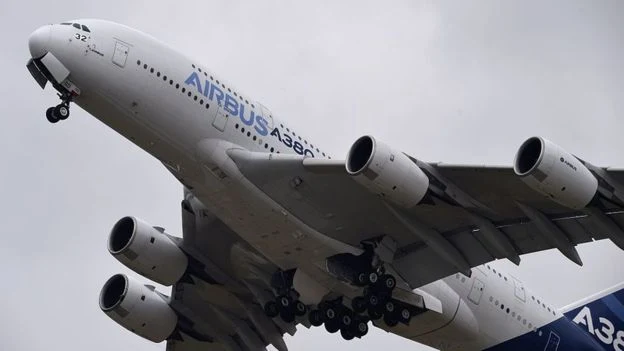Seven US Navy crew members are missing after their ship collided with a merchant vessel off the coast of Japan.
Among the injured is the USS Fitzgerald's commanding officer, who was taken to hospital by helicopter.
The destroyer collided with the container ship about 56 nautical miles (104km) south-west of Yokosuka.
Aerial images showed heavy damage to the Navy ship's starboard side after the collision at about 02:30 local time on Saturday (17:30 GMT Friday).
What happened?
The collision occurred near Yokosuka, a Japanese port city that is home to the US 7th Fleet, which comprises up to 80 submarines and ships and including the USS Fitzgerald.
It is unclear where the 154-metre (505ft) guided missile destroyer ship was heading at the time.
The ACX Crystal, a 222-metre (730ft) Filipino-flagged container ship, was travelling between the Japanese cities of Nagoya and Tokyo.
Marine traffic records suggest the ACX Crystal made a sudden U-turn roughly 25 minutes before the collision with the USS Fitzgerald. It is not clear why it changed course.
Marine traffic records suggest it was travelling at 14.6 knots (27km/h) at the time of the collision.
Marine traffic records for the USS Fitzgerald are not publicly available.
How bad are the damage and injuries?
Japan's coastguard is co-ordinating the search with US teams for the seven missing crew members. As of late afternoon local time, the 7th Fleet said the crew members were still unaccounted for.
The Navy ship's commanding officer, Cdr Bryce Benson, was in a stable condition after being transferred to US Naval Hospital Yokosuka, according to Navy officials.
Two other sailors were flown to hospital by helicopter for treatments for "lacerations and bruises", the 7th Fleet said on Twitter.
By mid-afternoon local time, it said that all flooding on board the USS Fitzgerald was under control. It is not at risk of sinking.
The ship has now returned to Yokosuka - under its own power, but with limited propulsion.
The Japanese coastguard said the ACX Crystal weighed just under 30,000 tonnes, about three times that of the USS Fitzgerald.
It sustained lighter damage to its port bow, and has now reached Tokyo.
The Associated Press agency said there were no injuries reported among the 20 Filipino crew members on board the container ship.
What is the fallout?
Relatives of those on board the USS Fitzgerald have been posting on the US 7th Fleet's Facebook page, requesting information on their loved-ones. An information hotline has been set up.
The collision took place in waters that get heavy traffic and that have experienced prior collisions, Japanese broadcaster NHK said. Ships travelling to and from Tokyo, as well as crossing the Pacific in both directions, pass through the bay where the crash happened.
NHK said that an association of commercial ship captains is calling for the creation of east-west lanes in the area to avoid collisions.
In a statement released on social media, US Navy operations chief Adm John Richardson said: "As more information is learnt we will be sure to share it with the Fitzgerald families and when appropriate the public. [...]
All our thoughts and concerns are with the Fitzgerald crew and their families."
One of the most advanced warships in the world - Rupert Wingfield-Hayes, BBC News, Tokyo
The area where the collision took place is extremely busy, with shipping heading in and out of Tokyo bay.
However, the USS Fitzgerald is one of the most advanced warships in the world - with highly sophisticated radars systems.
At the moment the focus is on the search for the missing sailors. Later will come the investigation into how one of the world's most sophisticated warships failed to avoid colliding with a 30,000-tonne cargo ship on a calm, clear night.
BBC NEWS




















